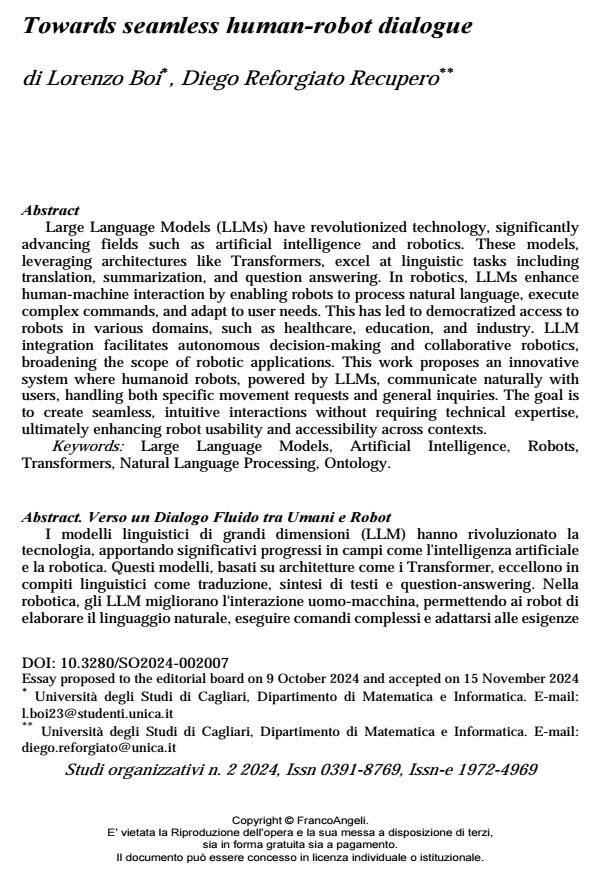Towards seamless human-robot dialogue
Journal title STUDI ORGANIZZATIVI
Author/s Lorenzo Boi, Diego Reforgiato Recupero
Publishing Year 2025 Issue 2024/2
Language English Pages 15 P. 137-151 File size 195 KB
DOI 10.3280/SO2024-002007
DOI is like a bar code for intellectual property: to have more infomation
click here
Below, you can see the article first page
If you want to buy this article in PDF format, you can do it, following the instructions to buy download credits

FrancoAngeli is member of Publishers International Linking Association, Inc (PILA), a not-for-profit association which run the CrossRef service enabling links to and from online scholarly content.
Large Language Models (LLMs) have revolutionized technology, significantly advancing fields such as artificial intelligence and robotics. These models, leveraging architectures like Transformers, excel at linguistic tasks including translation, summarization, and question answering. In robotics, LLMs enhance human-machine interaction by enabling robots to process natural language, execute complex commands, and adapt to user needs. This has led to democratized access to robots in various domains, such as healthcare, education, and industry. LLM integration facilitates autonomous decision-making and collaborative robotics, broadening the scope of robotic applications. This work proposes an innovative system where humanoid robots, powered by LLMs, communicate naturally with users, handling both specific movement requests and general inquiries. The goal is to create seamless, intuitive interactions without requiring technical expertise, ultimately enhancing robot usability and accessibility across contexts.
Keywords: Large Language Models, Artificial Intelligence, Robots, Transformers, Natural Language Processing, Ontology
Lorenzo Boi, Diego Reforgiato Recupero, Towards seamless human-robot dialogue in "STUDI ORGANIZZATIVI " 2/2024, pp 137-151, DOI: 10.3280/SO2024-002007